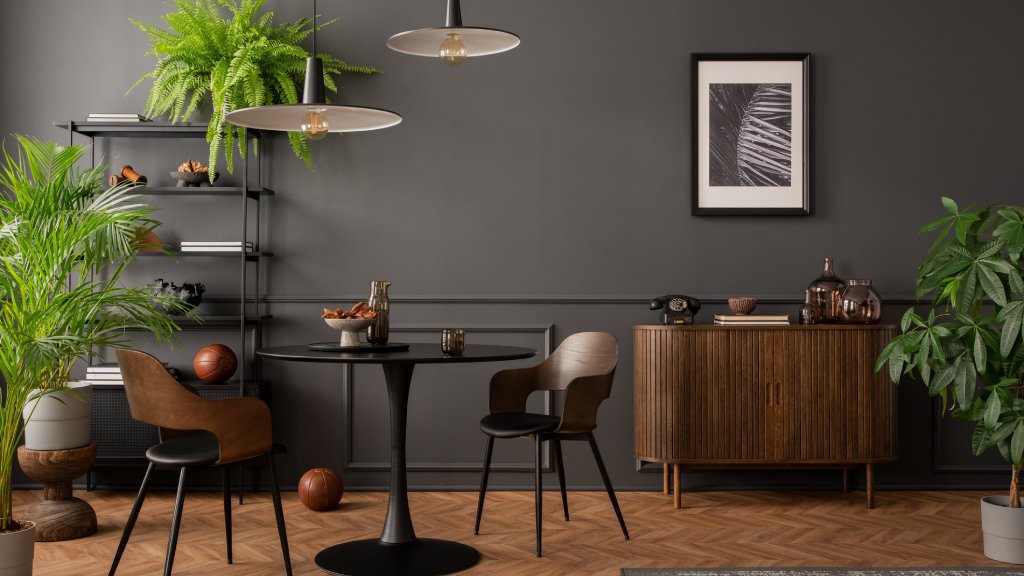Best Indoor Plants For Dark Rooms And Moody Decor
What are the best indoor plants for dark rooms? There are quite a few that love a dark environment, so you don’t need to deprive a room of plants just because it’s not sunny.

Let’s look at the best indoor plants for dark rooms. If you love houseplants but don’t think you have enough light, believe it or not, there are quite a few good indoor plants for dark rooms. While they may not be as showy as their sun-loving cousins, houseplants for dark spaces will still brighten up those shadowed recesses. Keep reading to learn about the best houseplants for dark rooms.
Best Indoor Plants for Dark Rooms
Plants are a bit like people. They grow, reproduce, and need food and water to survive. How about light? Plants need light as well, right? Well for the most part yes. Plants use the sun’s light to photosynthesize which is how they make food.
Surprisingly, some houseplants can be grown in a room with no windows and only artificial light. It might be more of a challenge but if you pick the right plants, you can add life to a dimly lit space.
For your dark interior space you will be looking for shade-loving plants. Here are just a few:
- Boston fern
- Cast iron plant
- Chinese evergreen
- Grape ivy
- Pothos
- Snake plant
- Spider plant
- ZZ plant.
- Peace lily
- Philodendron
All of these are tolerant of low light. Even parlor palms do well with little light. Need more color? Try growing a begonia. There are many varieties of begonia, some perfect for those dimly lit rooms of your home. Most of the low-light begonia suited to low-light homes are of the Begonia rex, angel-wing begonias with swirls and splashes of color in hues of purple, green, and pewter.
If you really want to make a statement, grow Paphiopedilums or slipper orchids. There are 60 species of slipper orchid, many suited for home use. They grow in mostly terrestrial pockets of organic matter and prefer bright but indirect light which may work for some low-light homeowners. They come in an array of colors of green, purple, white and pink.
Designing With Houseplants in Dark Rooms
There are varied reasons for a home with dark rooms. It could be a lack of artificial light, or a dark interior may be the result of surrounding trees that cool and shade the home. Overhanging eaves, attached covered patios, larger nearby structures, and the orientation of the home in relation to the sun are all reasons for a dim home interior. Sometimes the entire home is not low light but a certain area such as an east or north-facing window may have low light conditions.
Sign up for the Gardening Know How newsletter today and receive a free copy of our e-book "How to Grow Delicious Tomatoes".
The good news is you still have options. A light meter can help you to measure light for indoor plants in a specific location, allowing you to select just the right plant for the area.
Another option is to rotate plants. Perhaps you want a plant in a spot that is particularly devoid of light. You could rotate like-minded low-light plants, placing one in brighter light for a time and another in the low-light area. You can juggle the plants like this as long as you don’t leave any one plant in dim light for longer than a couple of weeks.
You can also use supplemental lighting especially if the lighting situation is particularly bleak. There are plenty of plant lights available, and many are energy-saving.
Lastly, if all else fails, there are always artificial options. Today’s fake flowers are so real looking they put the plastic blooms of the past to shame. There are artificial plants of every type from cacti and succulents to shrubbery and trees and everything in between. No need to feed or water, all you need is a feather duster.

Amy Grant has been gardening for 30 years and writing for 15. A professional chef and caterer, Amy's area of expertise is culinary gardening.
